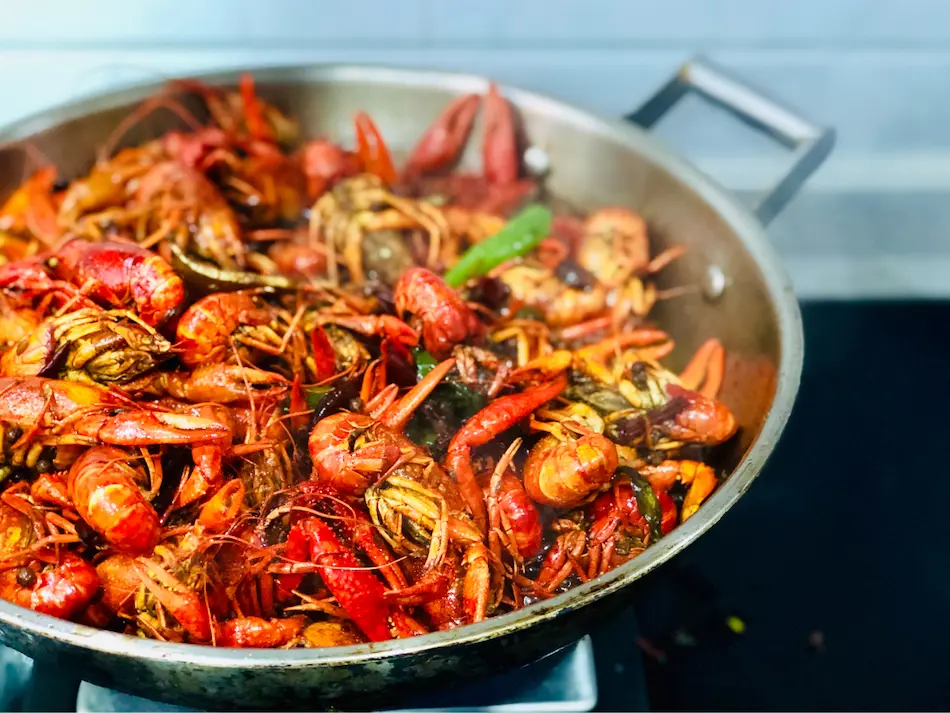Sustainability is the latest buzzword in everything from fashion to food, but how can you be sure that even your seafood is being farmed and caught ethically? Here’s how to switch your seafood diet to the most environmentally friendly choices, including sustainable seafood.
What Is Sustainable Seafood?
Sustainable seafood is any wild-caught or farmed fish that has been sourced and managed according to environmentally responsible guidelines. That means it is farmed or caught with an emphasis on both the long-term health and survival of the species and that of the aquatic ecosystems they call home.
Who determines what those environmentally responsible guidelines are? There are a few major players when it comes to the rules of sustainable seafood.
The Aquaculture Stewardship Council
The Aquaculture Stewardship Council, also known as the ASC, is a non-profit organization that certifies sustainable seafood producers that have met their standards of environmental sustainability and social responsibility. If you see an ACS label on your seafood, you can be sure that has been assessed and found to satisfy the requirements set by the organization.
While there are hundreds of criteria producers must meet to obtain their ACS approval- some of which vary from species to species- all of them can be boiled down to environmental and social impact. That means they must prove that they have minimized their impact on the environment, and operate their farm in a compassionate manner that sustains and cares for the community and environment around them.
Marine Stewardship Council
The Marine Stewardship Council (MSC) is another independent non-profit specializing in the standards of sustainable fishing and aquaculture practices. All MSC-certified sustainable seafood can be identified by their “blue fish label”, which indicates that the producers of that product were found to meet specific guidelines, including the following:
- Fishing only from healthy communities and stocks
- Carefully managing fishing practices to ensure sustainable stocks for the long-term
- Fishing practices that minimize damage to the environment
GlobalG.A.P.
GlobalG.A.P.-the G.A.P. stands for Good Agricultural Practices-offers consumer labels for aquaculture practices that have been proven to meet Integrated Farm Assurance (IFA) standards. These standards encompass every part of sourcing, production, and distribution, ensuring the entire supply chain operates sustainably.
There are several other organizations offering a certification program for aquaculture, like the Fair Trade USA Agriculture Production and Capture Fisheries Standards (APS and CFS). It’s worth familiarizing yourself with the labels you should look out for so you can always pick sustainable seafood options.
Why You Should Consider the Environmental Impact of Different Types of Seafood
As more attention turns to the ethical implications of the food we eat and the nuances of the supply chains we rely on, more and more of us are taking a closer look at the environmental sustainability of our seafood.
When it comes to the seafood industry, there are a few factors that determine the environmental impact of each product. The three factors you should consider most, though, are:
- How the fish is caught or farmed
- Where the fish are farmed
- The species of fish
The Monterey Bay Aquarium Seafood Watch is a great online tool you can use to be sure the fish you are eating is an environmentally conscious choice. It’s a sustainable seafood guide that can tell you what species you should look for, where the fishing and aquaculture practices for those species are most sustainable, and why you should avoid certain kinds.
According to the Monterey Bay Aquarium Seafood Watch, you should stay away from:
- Striped bass caught in the U.S. with set gillnets or stationary uncovered pound nets
- U.S. Atlantic Bluefish
- Brill
The Monterey Bay Aquarium also keeps tabs on the “Best Choice” in seafood, including:
- Farmed Abalone
- Arctic Char
- U.S. wild-caught carp
What Type of Questions To Ask About Where the Seafood Was Caught or Farmed
Take a cue from the leaders in sustainable seafood guides like the MSC and ASC, and ask yourself a few questions about where your seafood comes from.
How Was the Fish Caught?
If your fish was caught, the methods used are key to determining whether it was done sustainably or not. Commonly used methods like bottom trawling, cyanide fishing, and dynamite fishing can all have devastating effects on the environment.
Bottom trawling, which involves dragging a large net across the seafloor, can lead to the capture of all the sea life in the surrounding area, and seriously disrupt the ecosystem on the ocean floor.
Dynamite and cyanide fishing both utilize either explosives or poison to stun and incapacitate the fish, which can destroy coral reefs and throw off the entire food chain in that ecosystem.
Instead, look for fish that has been caught with hook-and-line or spear methods, with lead-free gear, and with reduced bycatch.
How Was the Farmed Fish Grown?
If your fish was farmed, it’s important to consider the conditions and regulations in place at the farm itself. Sustainable fish farms typically do not use hormones or antibiotics. In addition, the fish are fed a vegetable-based diet. This prevents overfishing that may be caused by farms that used wild-caught smaller fish as feed.
The most environmentally-conscious farms also pay attention to responsible water consumption, water quality, and lower or eliminate waste by using all parts of the fish.
Reasons To Choose Sustainably-Farmed Seafood Whenever Possible
A diet full of fresh fish is a great way to reduce your carbon footprint and increase your protein intake, but there are even more reasons to pick sustainably-farmed seafood than you might think.
Reduced Impact on Endangered Species
According to the WWF, 29% of the world’s fish stocks are overfished, 61% fully fished and 10% underfished. Choosing sustainably-farmed seafood reduces the harm caused to already endangered species and prevents other species from becoming endangered.
Sustainable fish farming reduces overfishing and emphasizes respecting protected areas, allowing the fish enough time to repopulate, and preventing bycatch.
Benefits Coastal Communities
Sustainable fishing methods are also good for the coastal communities the industry sustains. A more mindful approach to seafood sourcing means ocean ecosystems and fish populations will be better protected, and more likely to be there in the future. The longevity and health of these communities depend on sustainable seafood.
Keeping the Oceans Healthy
Waning fish populations and disruptive fishing and aquaculture practices throughout the seafood industry are detrimental to the well-being of our oceans. When you consider how important our oceans are for the overall health of our planet, our food supply, climate regulation, and oxygen generation, it’s clear we can’t afford to ignore the power of sustainable seafood.
Enjoy the Sustainable Seafood at NC Seafood Restaurant in Raleigh!
If you’re looking for sustainable seafood options in Raleigh, we’ve got you covered. NC Seafood Restaurant in Raleigh near Garner and Cary offers calabash-style fried oysters that are flavorful, tasty, and guilt-free. If you are in the area, take a look at our menu and see what style works best for you. Order online for take-out! We can’t wait to serve you!

